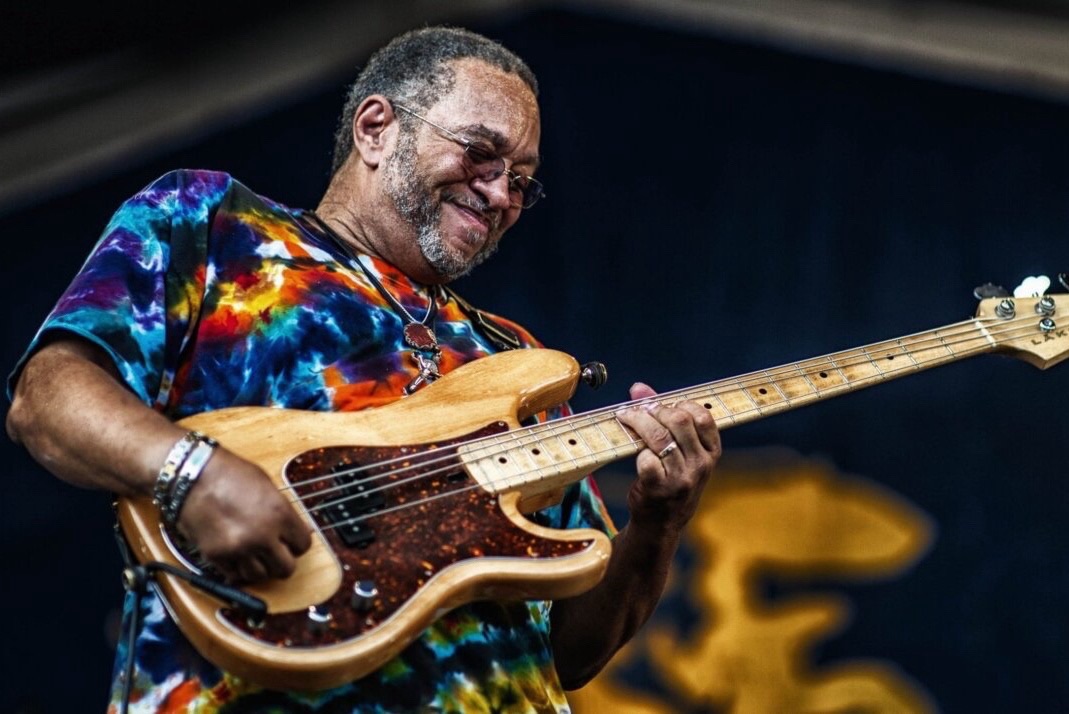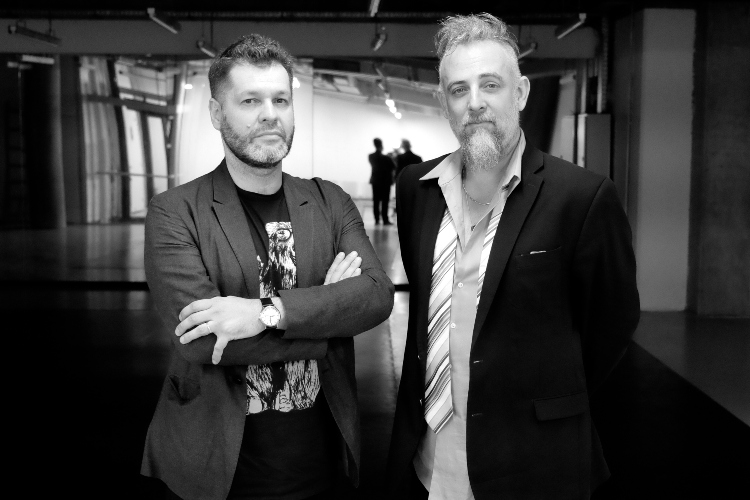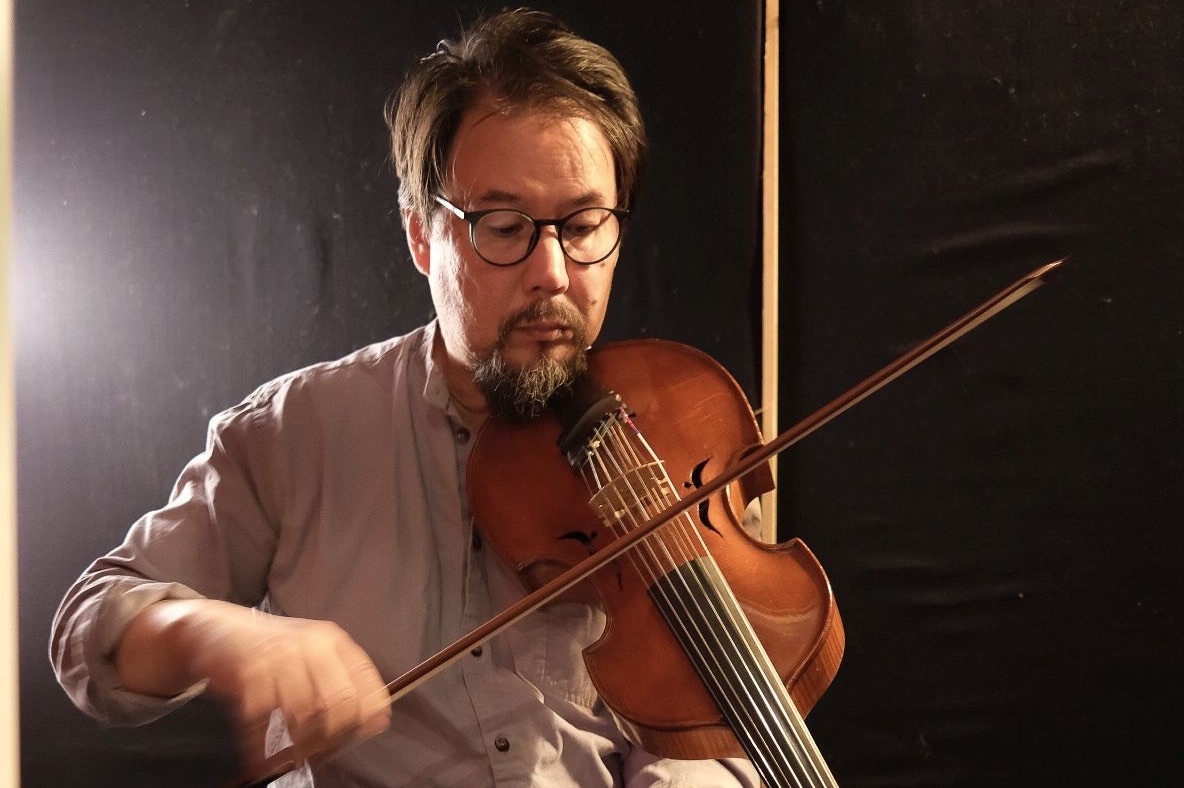Under the Influence of Music: A Conversation with George Porter, Jr. (Part One)
In his magnum opus, “Southern Nights,” the great Allen Toussaint sets not only the vivid imagery of natural beauty but leaves a lyrical thought deep of wonder: “Its precious beauty lies deep beyond the eye. Goes running through your soul. Like the stories told of old.” This line does more than portray the scenery of the composer’s visual surroundings. It reflects upon the creative brilliance of the city of his origins: New Orleans. The artistic arc of the Crescent City curves through jazz, Blues, rock, funk, zydeco, R&B, hip-hop, tribal music, and so much more. As easy as it is to treat these stylistic thoughts as isolated forms, they are truly all just different points on a finely contoured line of Black artistic excellence. The drum circles of Congo Square have reverberated past the levees, across the bayous, and around the globe. From his boyhood of sitting on stoops listening to local musicians to his most recent Runnin’ Pardners album, Porter’s Pocket (Color Red, 2025), George Porter, Jr. has been more than simply connected to this musical lineage; he has been an essential part of it.
Porter is perhaps best known for his role – alongside Art Neville and Zigaboo Modeliste – as one of the founders of the Meters. While debate continues as to who invented funk music, it is undeniable that the Meters were one of its earliest pioneers. Songs like their classic “Cissy Strut” would be nothing without Porter’s iconic bassline. As the group continued to create, it slowly evolved and changed, never content to stay in only one place. With Cabbage Alley (Reprise, 1972), the band added vocals to their previously wholly instrumental releases. With Rejuvenation (Reprise, 1974), they created a sampling goldmine. They were also one of the few to perform at the first-ever New Orleans Jazz and Heritage Festival, in 1970. But their own releases and performances are only part of the story of the Meters. Referred to by some as the “Southern Wrecking Crew,” the band has provided backing for some of the most important recordings to come out of New Orleans in the second half of the Twentieth Century: Toussaint’s Southern Nights (Reprise, 1975)), Dr. John’s In the Right Place (ATCO, 1973), with Lee Dorsey on the Toussaint penned “Ride Your Pony” and “Get Out of My Life Woman” (Amy, Amy, Amy, 1966), and The Wild Tchoupitoulas (Island, 1976), to name a few.
On his own, Porter has continued to support big-name artists – Paul McCartney, Tori Amos, Taj Mahal, Robbie Robertson, John Scofield, and David Byrne to name a few – who sought the funkiness that the bassist made known. But over the last thirty-five years, much of his attention has been placed on his band, Runnin’ Pardners. While the ensemble has changed size and membership over the years, Porter’s rich low electric bass has remained at its essence.
With Porter’s Pocket, the quartet version of the Runnin’ Pardners – with drummer Terrence Howard, keyboardist Michael Lemmler, and guitarist Chris Adkins – eschews vocals in favor of fully instrumental pieces. The abandonment of voice makes it easy to compare the album to early Meters records, but it is wholly its own thing. Built wholly around grooves formed during live performances, the record has a laid-back yet vibrant aesthetic that belies its studio creation. From the hornless suggestion of marching brass bands on “See Me? See Me? See Me?” to the blurring of slow-burning blues and Reggae on “Sauce on the Side,” the malleability of great Black musical forms, and the essential role New Orleans plays in the conversation is evident across the album.
We are honored to sit down with Porter, in celebration of our fifth anniversary as a site, to discuss Runnin’ Pardners, his musical upbringing, the Meters, Earl King, Professor Longhair, the Wild Tchoupitoulas, sampling, and more.
PostGenre: You have had various incarnations of your Runnin’ Pardners group for over twenty years. What do you enjoy most about it?
George Porter, Jr.: Well, the band has evolved from being a trio to going as large as nine pieces. But as for this four-piece version I’m working with today, what I’ve always liked is that it has never been the kind of band that stayed in a certain space. We go off the reservation so easily without even thinking about it. We play songs, but there is always room for jams. We allow jamming inside of pretty much every song we play.
PG: What does seem to set Porter’s Pocket apart from other records you have done with the band is the music on this album seems more influenced by jazz. Is that a fair assessment?
GP: The truth is that when I listen to the record, I don’t hear as much jazz as everybody else is telling me they hear. But my lady, Denise Sullivan, has been asking me to do an instrumental record for some time now. She leaned towards the jazz side of instrumental records when asking for this record. We went into the studio and recorded about fourteen instrumental songs, nine more that were earmarked for lyrics to be added to them, and then twelve that are my covers of old New Orleans songs from my kid days.
PG: Do you plan to release the rest of the music – the vocal pieces and old New Orleans ones – at some point?
GP: Oh, yes, absolutely. All told, I think we recorded about forty-some-odd songs that week. And we found that the instrumental tracks seemed to catch the ear of everyone more than any of the other stuff. And, so, that’s where we ended up going.
PG: What is your process for writing the pieces that ended up on Porter’s Pocket? The press materials speak of the importance of the drums to your music. Do you typically start with a bass line first or a drum rhythm?
GP: We don’t sit down and intentionally attempt to write a piece. The songs come around in a much more organic way. All the songs on the record came from jams we made at Monday night sessions at the Maple Leaf. Chris Adkins brought a couple of licks that we organized and made a few songs out of. Mike Lemler, the keyboard, also brought in one or two pieces. And [drummer] Terrance [Houston] would just set up a pocket, and we’d play on top of it. We take all of these ideas, play around with them, and see where they go.
PG: Does that compositional fluidity make it easier to improvise as well?
GP: I think so. For all eight pieces, the body of the song – I call it the pocket of the song – has got to be strong enough for something to go on top of. That’s what we go after when we play together: a strong body; a strong pocket. And we build off of that.
PG: Do you take that same loose approach when you are making music with vocals? It seems the addition of vocals may require more structure.
GP: The vocal songs are almost all instrumentals initially. I don’t write lyrics. My lyric writing is horrifying. But I’ve had a group of ladies that have been writing amazing things for me. I’ve worked with Leslie Smith back to my record It’s Life (Transvideo, 2007). Mia Borders has also written songs for the Porter Trio, which I have recorded here in my studio but which haven’t been released. And, lately, we’ve been using a young lady named Susan Cowsill from the Cowsill family. She’s been writing lyrics for me, and she’s an angel ’cause I know nothing about writing lyrics. I just write the music, and she can write lyrics to match.
PG: So, you did not pick up anything on songwriting from experiences like playing behind Allen Toussaint with the Meters since Toussaint was such an incredible songwriter?
GP: Well, I don’t think I’m an incredible songwriter at this point yet. I think I’m still looking for that one piece of music that I can sit back and say, ”Oh yeah, that’s the one.” But if I find that one piece of music, I’m going to want to just keep doing that over and over again, which I don’t think I’d want to do.
I really like to be able to go off the ranch; to play and have fun musically. Runnin’ Pardners, did a four-night run at Garcia’s up in Port Chester, New York where we played two sets every night, for a total of eight shows. And in those eight shows, we never played the same song twice. There was so much time available for us to go off in different directions from our start with a simple funk pocket.
By the time [the Meters] were working with Allen and backing people like Lee Dorsey, I was a confirmed bass player. I learned about what not to play. Allen would tell you what not to play rather than what to play. He always said that it’s what you don’t play that’s gonna make the song work. It took a while for me to understand what he wanted. He always had the whole song in his head, but you don’t know that he’s giving you a part to play. And when you veered away from that part, he would always just say, “Porter, you just stepped on somebody. Stay out of their way, man. Stick with what I gave you.” It took a while for me to understand that. But when you start listening to the whole session after it’s done and released, you see what he was saying. It’s not about what you play. It’s about what you don’t play.
PG: Did you ever feel boxed in by Allen’s vision being so clear to him?
GP: I don’t think so, no. I absolutely don’t think so. I think I might have put myself in a box because of things that I didn’t want to do. At some point, with the Meters, the guys who used to open for us would have their records out there. And hearing those, Zig[aboo Modeiste] wanted me to start playing slap bass like the Brothers Johnson. I told him I wasn’t playing like that. It wasn’t me to slap the bass. That shit hurts. [laughing]
PG: [Laughing] Probably so. But in terms of funk, more broadly, some have called it the meeting of jazz and R&B. Growing up, your father was into jazz and your mother into R&B. Do you feel those merging influences made funk easier for you, particularly early on?
GP: Well, I believe that my wanting to play music early on probably had a lot to do with the fact that there was always music in our house. I grew up in a corner house on Poydras Street. At a house down the street, there would be fifteen to twenty guys sitting and playing guitar in a smoke-filled little room with one bass player. I would sit on the steps and listen. These guitar players would play all night long. I wasn’t able to stay out past when my mama allowed, which was close to 10:00 or 10:15 at night. You could hear her call my name from ten doors down and yelling at me that it was time to come home. I‘m lucky to have seemingly always been under the influence of music. I started learning the piano when I was seven. That didn’t last long. [Laughing].
PG: Why is that?
GP: ‘Cause Zig’s older brother Clinton was my piano teacher. The fact we were having piano lessons taken at Zig’s house got to be a little chaotic. His mom cut that slop short.
PG: And you moved onto guitar?
GP: Violin, then guitar. When I was seven and a half, my mom went to World Class Music. They had a lease to purchase [program], and she used it to get me and my brother violins. My dad came home and heard us screeching in the back room, and he hit the ceiling. My dad said the violins had to go and that he didn’t want us to be bringing any more instruments into the house.
But after that, for my eighth birthday, my grandmother gave me an acoustic guitar. And that guitar was the beginning of it all. For the first two years, my teacher, Mr. Brown, tried to get me to play the classical guitar formula with ten fingers. But the music he taught me was Country Western cowboy songs like “Red River Valley.” It was way later in life that I fully understood what my teacher was trying to do. He was just trying to get me comfortable with playing the classical formula on guitar in a way different than introducing me to the music of [Andrés] Segovia and making me play that music.
One Saturday morning, on my way to guitar class, I heard music. I turned the corner and saw Benjamin “Poppi” Francis and his grandfather sitting on the steps playing. Poppi was playing bass lines on his guitar and his grandfather was playing using a classical formula with all ten fingers. But they were playing songs like “St. Louis Blues,” and I realized those were the kinds of songs that I wanted to play. And that moment ended my student career with Mr. Brown. Mr. Brown said I was undisciplined and would never ever be anything musically.
PG: And, actually, when you were first getting involved with the Meters, Art [Neville] heard you play guitar but was unimpressed with your skills on guitar?
GP: Ohh. Well, Art had initially not heard me on guitar. A guy named Herbert Wing sent me to Art. Art had called on Herb to come to play a gig with him, but he was busy with a frat house gig. So, Herb sent me to Art as a substitute. And I went. I knew the music, but I played rhythm guitar at that time. I was not a lead guitar player. When we were playing together, Art kept turning around and telling me that he wanted me to take a solo. I said, “No, I don’t solo. No, no, no, no, no, no, no solo.” After the performance, Art drove me home. The club was out in Gentilly, and my house was up in Carrollton, so it was an eighteen to twenty-minute drive. And he didn’t speak to me for almost the entire way home. When we got about two blocks from my house, he just looked at me and said, “Man, you’re the worst guitar player I ever heard.” I figured after that, I would probably never get to see him again. Of course, that is not how things turned out.
In Part Two with George Porter, Jr. we get deeper in the Meters, Earl King, Professor Longhair, The Wild Tchoupitoulas, sampling, and more. ‘Porter’s Pocket’ is available now on Color Red Records. It can be purchased through the label’s website. More information on George Porter, Jr. is available on his website.




One thought on “Under the Influence of Music: A Conversation with George Porter, Jr. (Part One)”
Comments are closed.